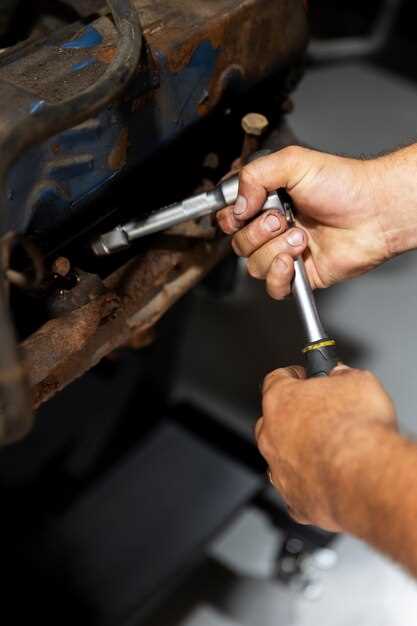
Changing your truck oil is an essential part of vehicle maintenance that can prolong the life of your engine and enhance its performance. While many people opt to take their trucks to a mechanic, doing it yourself offers not only cost savings but also a sense of accomplishment. This guide will walk you through the process, ensuring you can confidently tackle this task at home.
Understanding the importance of regular oil changes is crucial. Fresh oil lubricates the engine’s moving parts, reduces friction, and helps to dissipate heat. Over time, oil degrades and becomes contaminated with dirt and debris. Neglecting to change your oil can lead to serious engine issues, such as poor performance or, in the worst cases, engine failure.
This step-by-step guide is designed to make the oil change process uncomplicated, even for those who may have limited mechanical experience. From gathering the necessary tools and materials to disposing of old oil responsibly, each step will be clearly outlined to ensure a smooth and efficient operation.
Let’s dive into the details and get your truck running at its best with fresh oil.
Gathering Tools and Materials for an Oil Change

To successfully change your truck’s oil at home, it’s essential to gather the appropriate tools and materials beforehand. This preparation will ensure a smoother and more efficient process. Here’s a comprehensive list of what you will need:
1. Oil Filter Wrench: This specialized tool is designed to remove and install the oil filter easily. It provides the necessary grip to loosen the filter without damaging it.
2. Socket Set: A socket set, preferably metric or SAE based on your truck’s specifications, will be crucial for removing the oil drain plug. Make sure to have the correct size to avoid stripping the plug.
3. Oil Drain Pan: A large, flat oil drain pan will catch the old oil as it drains from the engine. Ensure it has a capacity suitable for your truck’s oil volume.
4. New Oil Filter: Purchase a new oil filter that matches your truck model. Consult your owner’s manual or a trusted auto parts store if you are unsure about the right type.
5. Engine Oil: Check your owner’s manual for the correct type and amount of engine oil required for your truck. Make sure to choose high-quality oil that meets manufacturer specifications.
6. Funnel: A funnel will help pour new oil into the engine without spilling. Opt for a funnel with a wide mouth for easier pouring.
7. Rags or Shop Towels: Keep a supply of rags or shop towels on hand to wipe up any spills and clean your hands. These will also help with maintaining a tidy workspace.
8. Safety Gear: Always wear safety glasses and gloves to protect yourself from potential spills or contact with oil. This gear is essential for working safely under the vehicle.
9. Jack and Jack Stands: If your truck requires you to be underneath it for the oil change, use a reliable hydraulic jack and jack stands. Never work under a vehicle supported only by a jack.
10. Oil Disposal Container: Once you’ve drained the old oil, store it in a sealed container for proper disposal. Never pour used oil down drains or throw it in the trash.
By gathering these tools and materials in advance, you’ll be well-equipped to change your truck’s oil efficiently and safely.
Draining Old Oil and Replacing the Oil Filter

Before beginning the process of changing your truck’s oil, ensure you have the necessary tools and materials ready. This includes an oil drain pan, a socket wrench, a replacement oil filter, and new engine oil. Once you’ve gathered everything, follow these steps to successfully drain the old oil and replace the oil filter.
First, park your truck on a level surface and turn off the engine. Wait for the engine to cool down to avoid burns. Once cooled, locate the oil drain plug, usually found at the bottom of the oil pan. Use a socket wrench to loosen and remove the drain plug. Ensure the drain pan is positioned directly under the plug to catch the old oil.
As you remove the plug, allow the old oil to flow completely into the drain pan. This process may take a few minutes. To thoroughly drain the oil, consider letting it sit for approximately 10–15 minutes, allowing all residual oil to exit the engine. Once the oil has completely drained, clean the drain plug with a rag, making sure there are no debris or old oil residue left.
Next, replace the drain plug and tighten it securely with the socket wrench. Be cautious not to overtighten, as this might strip the threads or damage the oil pan.
Now, proceed to replace the oil filter. The oil filter is typically located near the engine block and can be identified by its cylindrical shape. Before removing it, place the drain pan beneath the filter to catch any residual oil. Use an oil filter wrench to loosen and unscrew the old oil filter. As you remove it, be prepared for a small amount of oil to spill out.
Take your new oil filter and apply a small amount of new oil to the rubber gasket on its top. This will help ensure a proper seal and make it easier to remove during the next oil change. Screw in the new oil filter by hand until it’s snug. Avoid using the filter wrench to tighten it, as this can cause damage.
Once the old oil has been drained and the new oil filter is in place, you’re ready to refill your engine with new oil. Make sure to check your owner’s manual to determine the right type and quantity of oil required for your truck.
Filling with New Oil and Checking Fluid Levels
Once you have drained the old oil from your truck, it’s time to fill it with new oil. Start by ensuring you have the right type and amount of oil compatible with your truck’s engine. Refer to your owner’s manual for specific requirements.
Begin by placing a funnel in the oil fill cap to prevent spills. Carefully pour the new oil into the engine. It’s recommended to pour in a little at a time, checking the level frequently to avoid overfilling. Most trucks will require between 5 to 8 quarts, but this can vary.
After filling, allow the oil to settle for a minute, then use the dipstick to check the oil level. Pull the dipstick out, wipe it clean, then reinsert it fully and remove it again to check the oil level. The oil level should be between the minimum and maximum marks on the dipstick.
If the oil is below the minimum mark, add more oil in small increments, repeating the checking process until it reaches the desired level. It’s essential not to exceed the maximum mark as this can cause engine complications.
Once the proper oil level is achieved, resecure the oil fill cap. Start the engine and let it run for a few minutes to circulate the new oil throughout the system. After shutting off the engine, wait a few moments and check the dipstick one more time to ensure the oil level remains adequate.
Finally, make sure there are no leaks under the truck. Inspect areas around the oil filter and drain plug to confirm that everything is secure and functioning properly. With these steps, you’ve successfully filled your truck with new oil and ensured that fluid levels are correct.
